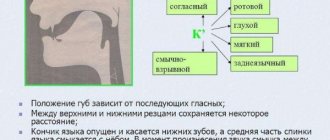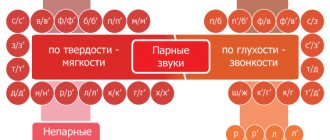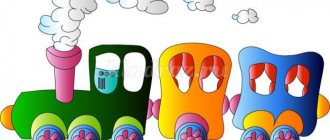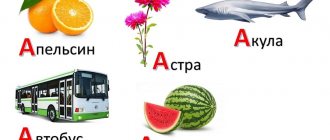Differentiation of paired consonant sounds D and T.
LESSON SUMMARY ON Speech Therapy (grade 8b, January 29, 2020)
Topic: Differentiation of paired consonant sounds D and T.
Goal: Differentiation of sounds [D] - [T].
Tasks:
- Educational: develop auditory differentiation of sounds [D] - [T].;
develop the ability to correlate the sounds [D] - [T] with the letters D and T;
- Correctional: develop phonemic hearing, phonemic perception. Clarification and comparison of articulation and characteristics of sounds [D] - [T]. Differentiation of sounds [D] - [T] in syllables, words, phrases, sentences, texts.
- Developmental: develop skills in the operations of phonemic analysis and synthesis; develop visual perception, thinking, auditory and visual memory, and expand vocabulary, develop coherent speech.
Equipment: pictures of the seasons, subject pictures, didactic material, algorithm, syllabic scheme.
Progress of the lesson.
I. Organizational moment.
- Guys, guests came to our lesson today. Let's welcome the guests.
- The one who can name the names of the seasons in the pictures will sit down. Look at the pictures and
determine what time of year is depicted on each of them.
- What time of year is it now? (winter).
II. Main part.
- Guys! Cheerful gnome brothers came to visit us from the fairy forest. One's name is T
Onyk, another
Donik
. They came to find out what we had already learned in class and, of course, to learn a lot from us.
- Characteristics of sounds T-D.
T
Onik and
Donik
believe that they have the same names. Is it so? Let's try to determine what the difference is in these names.
- That's right, the first sounds of names are different. Name these sounds.
- Now let's remember the characteristics of sounds D
and
T.
_ - Make sounds T
and
D.
_
What do lips do? Teeth? Language? (The tongue hits the upper teeth, the mouth is slightly open, the lips are smiling). - Place your hand on the neck and listen to whether the neck rings when you pronounce the sound D
?
Is this sound pronounced with or without a voice? (with a voice, ringing). - Now make a sound T
and listen, does your throat ring when you pronounce this sound?
(No).
The sound is pronounced without a voice
(voiceless). - What is the difference? (the sound “T” is unvoiced, and the sound “D” is voiced)
- How are the sounds similar? (The tongue knocks on the upper teeth, the lips smile, the air stream meets an obstacle, both sounds are consonants. They can be hard and soft).
2. Correlation between sound and letter.
- What are the sounds in writing indicated by? (letters)
- Remember what letter elements we need to write lowercase letters and compose these letters.
The letter D is like this house, T has turned into an antenna
We will live in it for a long time. And I found myself on the roof
3. Differentiation of sounds in syllables. Let's help Tonic and Donik understand the scheme.
Look at the diagram, compose and read the syllables.
Write down the syllables in pairs according to voicedness - voicelessness.
Indicate in them the presence of the sounds studied in the lesson.
4 Pure sayings.
Let's say pure sayings, and our gnimiki will listen to how we correctly pronounce syllables and words.
Ta-ta-ta - una broken purity
Ti-ti-ti- ate almost all the porridge
That's it - we started playing lotto
5 Game “The letters ran away.” Help the gnomes find the missing letters from the words. (Pictures)
Determine which sound in the word is D or T and the place of the sound in the word. Help Tonic collect pictures with the sound T, and Donik with the sound D:
Gift, glass, reel, machine, gate, house, gardener, postman, artist, seller, trough. Explain the meaning of each word. Make up sentences with these words.
6. Differentiation of sounds in words.
- Now let’s play with the gnome brothers the game “What is where?”
- We will write down the guessed word in a notebook and highlight the letters T-D.
Pictures: melon, chair, pencil, house, plate, cabbage, bucket, slippers, bus
.
- What's in the top left corner? What sound do we hear in this word? ( capusTA
). In the word cabbage I hear the sound “T”, it is consonant, unvoiced, which means I write the letter T, highlight the letter T.
- What's in the top right corner? ( Tplate
)
- What's in the bottom right corner? What sound do we hear in this word? ( chair ) _
- What's above the house? What sound do we hear in this word? ( Tapochki
)
- What's to the left of the house? What sound do we hear in this word? ( pencil ) _
- What is between the pencil and the chair? (dohm
)
- What's under the plate? ( bucket ) _
- What's to the right of the cabbage? ( dynya
)
- What's underneath the cabbage? ( awTobus
)
- Now let’s ask a question for each word: Which one? Which? Which?
7. Working with the proposal.
a) Help the gnomes ( compose and write down phrases and sentences ):
Name words-signs
.
b) Read the sentences , choosing words that match their meaning from brackets. Name
incomprehensible words.
8. Physical exercise
9. Working with text.
The gnomes have brought us new tasks. Tonic brought us the text, and Donik wants to hear a little story from you:
a) Read the text, replacing the blue chips with the letter T and the green chips with the letter D.
Winter came. She carefully covered nature with a blanket of pure white snow and bound rivers and lakes with ice. Winter cools the air with severe frosts.
- What is the text about? About what time of year?
- Read selectively: about the sun, about the wind, about the rain, about the days. Copy by inserting letters.
b) Look at the algorithm
(the meaning of the word “algorithm” is clarified.
Answering the questions from the table, write a short story about Winter.
III. Summary of the lesson.
- Guys, you are so great! You taught the gnomes to distinguish sounds and letters D
and
T.
_ They were taught to identify these sounds in words and sentences. Learned how to write short stories. Tonic and Donik brought you small gifts for your good work.
VI. Homework.
Article:
Objectives :
Educational:
- clarify ideas about the sounds and letters “T” and “D”;
- improve and consolidate the ability and skills of differentiation
- sounds and letters “T” and “D” in syllables, words, phrases and sentences;
- enrich vocabulary
Educational:
- develop phonemic perception, skills of sound-letter and syllabic analysis and synthesis;
- develop visual and auditory attention, logical thinking and memory;
- develop spatial and visual concepts;
- develop gross and fine motor skills
Educational:
- foster activity and independence of students in the classroom;
- instill self-control over speech in children;
- foster a sense of camaraderie and goodwill;
- develop interest in speech therapy classes.
Equipment:
Doll “Znayka”, travel map for each student, letter-symbols “T” and “D”, watercolor paints, blank letters, stars, tape recorder, disc by Antonio Vivaldi - “The Seasons”, disc - classic in nature “Beethoven and the Forest” cool”, computer, projector, object pictures, 6 sets with puzzles for modeling, blanks in the form of “snowflakes”, “Christmas trees”, “cars”, “Clever” and “Clever” badges.
Progress of the lesson
I. Organizational moment.
1. Creating an emotionally positive background for the lesson (in a circle on the carpet).
Guys! Let's stand in a circle, extend our palms to our neighbors and share the warmth with each other. Let's smile and wish each other good luck!
Today you will have an exciting winter trip to the station “Umnikov and Umnitsy” together with the smart fairy-tale hero, Znayka.
To do this, we need to properly prepare for this journey.
– What date is today? What day of the week? What season? 1. Game “Snowball”, children name the signs of a winter day. (What kind of winter day? Children’s answers: snowy, frosty, cold, white, short, gloomy.)
– Guys, name the objects, then highlight the first sound in the words and you will find out what type of transport we will go on (Slide 1 showing object pictures - coat, monkey, raccoon, umbrella, woodpecker.)
- Well done, we're going on a fun train!
2. Rhythmic warm-up “Train”. The speech therapist invites students to divide into pairs. Children clap their hands with a gradual increase in speed.
The train started moving And now the train is picking up speed.
Speech therapist: - So, our train is ready for departure, all that remains is to correctly place all the passengers in their cars. (From the proposed pictures: board, notebook, calculator, felt-tip pens, pencil, computer, the 1st pair selects only those whose name consists of one syllable, the 2nd pair selects pictures with 2 syllables, the 3rd pair selects pictures from 3 syllables – )
II. Announcement of the topic and objectives of the lesson
Speech therapist: - Guys, guess the riddles, determine the first sound in the riddles.
I’m lying in my school bag, I’ll tell you how you study. (Diary.)
Now I'm in a cage, now in a line, You can write on me. You can also draw. What am I? (Notebook.)
Speech therapist: - What do you think we will do with the letters “T” and “D” during our journey (pronounce correctly, distinguish by spelling and pronunciation, designate with letters, find these sounds in syllables, words and sentences (Slide 2) .
III. The main part of the lesson.
1 . Speech therapist: - We arrived with you at the Bukvarik station (Slide 3). What sound is it talking about?
With the tongue, the front edge, we hit the upper gums.
The sound is short, the sound is explosive, the sound is voiceless, dull.
(Children pronounce the sound [T], give it a description, prove deafness with various control techniques: fingers on the vocal cords, ears covered with palms.) Znayka gives stars to those children who answered correctly. Similarly: working with sound [D] after reading lines.
We'll hit the gum with our tongue, we'll add a ringing voice.
Similarities: both sounds are consonants, Difference: voiced, deaf.
– What do the letters “D”–“T” look like? (Children’s answers.) The speech therapist shows pictures (Slide 4, 5) and reads the lines.
The hammer knocks: Knock, knock! I am the letter “T”’s best friend!
There stands blowing smoke, the letter D is a chimney.
2. Game “Scouts”.
Speech therapist: – We replaced the letter “D” with the number – 2, and the letter “T” with the number – 1.
Unscramble the syllables by replacing the numbers with the corresponding letter. (Slide 6) Write down the answers on “snowflakes”.
– Which of them are not words? (Awarding stars.)
3. Breathing exercises.
Speech therapist: - How should we speak? (Clearly, distinctly, understandable to everyone.) Let’s do breathing exercises. The “breathing cloud” will help us (Slide 7).
Performing exercises:
IP: standing, arms down. We take a slow breath through the nose, inflate the tummy, hands in front of the chest. Exhale slowly through your mouth, while simultaneously drawing a circle symmetrically with both hands. We try to distribute the air over the entire circle. We repeat three times. Now let's draw squares and triangles (three times each). Let's work on the strength of exhalation. Exercise “candle”. Inhale through the nose, three short strong exhalations onto the fingers, representing a burning candle. We repeat three times.
4. Speech therapist: - Znayka invites us to go to the next station “Gramoteyka” (Slide 8).
Isolating D–T in words from pictures (Slide 9).
– Attention to the screen “Now you will see pictures there, and show the letter “D” or “T” that you will write in this word. Use the letters D-T that you colored.
- What is this? What letter will we write in this word? What account will we write it down? (Shovel, star, telephone, house, candy, sofa.)
5. Game “Find and Read”.
- Guys, find the words in the table and read them. Name words that contain the sounds “T”–“D” (snowmobile and ice, Slide 10).
6. Physical education minute “Locomotive”.
| The engine goes, goes: Chuh-chukh-chukh, chuk-chukh-chukh. He takes the kids home: Chukh-chukh-chukh, chuk-chukh-chukh. Past the pines and rowan trees: Chuh-chukh-chukh, chuh-chukh-chukh. Past the fir trees and aspen trees: Chuh-chukh-chukh, chuk-chukh-chukh. Stop on the lawn: Chug-chug-chug, chug-chug-chug. We'll jump like bunnies: One-two-three, one-two-three. Let's play, have fun and return to the carriages. Past the maples and birches: Chuh-chukh-chukh, chuh-chukh-chukh, The little train rides again: Chukh-chukh-chukh, chuh-chukh-chukh. | Rotate both hands alternately at the shoulder and elbow joints; “fist-rib-palm” for counting; repeat the “train” movement; “fist-rib-palm” 2 times; “little train”, we speed up the pace; “fist-rib-palm” 2 times; “train” at a fast pace; “fist-rib-palm” 2 times, fast pace; slowly spread your arms to the sides, stretching; “fist-rib-palm” 2 times, slow down the pace; hands on the belt, jumping on two legs; jumping alternately on the left and right leg; jumping with turns left and right; marching in place; locomotive movement; “fist-rib-palm” 2 times; “locomotive”; “fist-rib-palm” 2 times, speed up the pace. |
7. Speech therapist: - Guys, we stopped at the final station of “Clever Men and Clever Girls” ( slide No. 11 ). Znayka received an envelope with an assignment for us.
8. Make up a phrase. (Slide 12)
Speech therapist: – Read the words of the first column. What letters are missing in the words? (letters “T” - “D”), then the words of the second column. – Connect the words from the first column with the words from the second column so that you get phrases (doing the work on handouts in the form of “Christmas trees”). Checking the task.
9. – Make up sentences using words and pictures. (Slide 13).
IV. Summary of the lesson.
Speech therapist: - Guys, our journey ends. Tell Znayka about your mood, your impressions of our journey, what sounds we heard today. What tasks did you like? Finally, I will ask everyone to pronounce only the letters, form a word and read (Slide 14). The final word is well done!
- Well done! Now close your eyes and listen to the words that Znayka wants to tell you: “I really liked the way you talked about your mood. I'm glad you completed all the tasks. I want to wish you to always be kind and friendly, so that you always have a cheerful, joyful mood! Goodbye! See you again!





